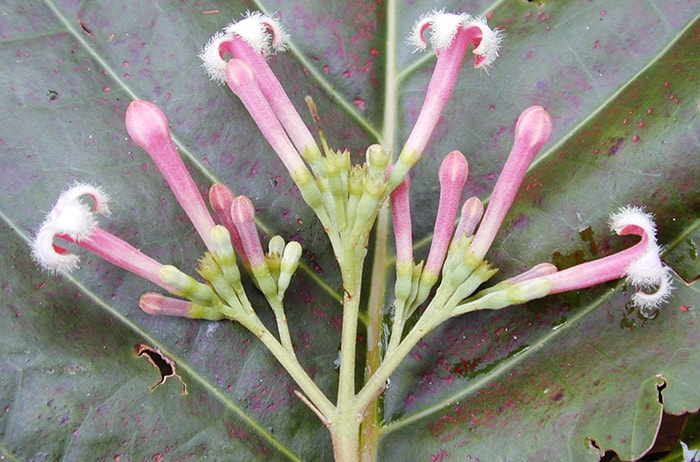There is a tree found abundantly in the mid-elevations of the Andean mountains in South America and that is cinchona, which is also sometimes referred to as quinine bark. Sounds familiar? Well, that’s because the said tree is the primary source of quinine, a drug used for treating malaria.
Already impressed with this tree? Then continue reading because it offers so many other benefits!
Cinchona is actually Ecuador and Peru’s national tree. It was once native to those countries, but then eventually it spread to other parts of the planet as the need for the manufacturing of drugs for malaria increased. These days, cinchona is grown in so many tropical countries, including various African regions.
Actually, there are nearly 40 known types of cinchona, but only 3 of those are said to pack the most concentrations of quinine. This is why they are the ones that are commercially grown and harvested across the globe.
In order to obtain quinine from cinchona, the bark is stripped from the tree — that’s where quinine can be primarily found. Then the bark is dried and pulverized, and then sent to various pharmaceutical companies and herbal stores. However, quinine is also commonly used for adding a bitter flavor to certain foods and beverages.
Other than for providing quinine for the treatment of malaria, cinchona actually offers so many other health benefits. Read on to know some of those that can really impress:
It Reduces Fever
Scientists say that cinchona possess antipyretic properties, which means it is capable of controlling fever. It’s just one of the many reasons why its quinine content is a revered treatment for malaria.
It Eases Painful and Swollen Joints
Cinchona is also commonly employed for alleviating joints that are painful and inflamed. So in other words, it can be very beneficial for individuals who are suffering from osteoarthritis — cinchona can save them from the need to regularly depend on NSAIDs that are known to come with certain unfavorable side effects and risks.
It Deals With Various Digestive Issues
Traditional healers in South America commonly employ cinchona for treating a host of problems concerning the digestive system. For instance, it is usually recommended for dealing with amoebiasis and dysentery because of its amazing ability to fight off protozoan parasites, which are the ones that cause the said digestive issues. By the way, cinchona is also a popular home remedy for indigestion and diarrhea.
It May Lower Cancer Risk
Cinchona is also employed by South American traditional healers for preventing and even alleviating cancer. They say that is especially very good against breast cancer, mesenteric cancer, liver cancer and spleen cancer.
It Also Regulates the Heart’s Rhythm
One of the most popular uses of cinchona is for regulating the heart beat. In other words, it’s a known all-natural remedy for arrhythmia which, in some cases, can be very serious.
It Wards Off Anemia
Traditional healers also recommend cinchona for women who bleed heavily during their period because it is known to help increase the production of red blood cells or RBCs, which are the oxygen-carrying components of the blood. Heavy menstruation is just one of the many things that can lead to anemia.
CAUTION: Just like when planning on taking any herb or herbal preparation, make sure that you talk with your health care provider before you attempt to use cinchona for whatever medicinal or therapeutic purpose. This is most especially true if you are pregnant or breastfeeding, or diagnosed with a condition.
Don’t forget to have this article reposted on your different social media sites to get your family and friends acquainted with cinchona, a tree that is the primary source of the drug for treating malaria.








